In 2018, Stephane Paris explained the work done by Cinesite on Ant-Man and The Wasp. He joins DNEG in 2019 and works on Wonder Woman 1984 and Jungle Cruise.
How did you and DNEG get involved on this show?
Tricia Mulgrew, the VFX Producer of Moonfall and Peter G. Travers, the Production VFX Supervisor, came to visit our Montreal office for a presentation and the connection was very instantaneous. Between our presentation and the following meeting, it was pretty clear we were on the same page for this movie. Peter had a clear idea of how the inside of the moon would look. On March 12, 2020, we had our first meeting with Peter, Tricia and Roland where we started to talk about the Anomaly.
How was the collaboration with Director Roland Emmerich and Production VFX Supervisor Peter G. Travers.?
The collaboration with Roland and Pete was very open and direct. We had access to them all the time, which is quite rare. It was an excellent experience to interact directly with Roland and talk through shots and witness his process. Pete was driving it all and even created many scenes and renders to show us what he wanted for the mood inside the moon way ahead of time. Pete is very hands-on as well and designed a few of the key shots.
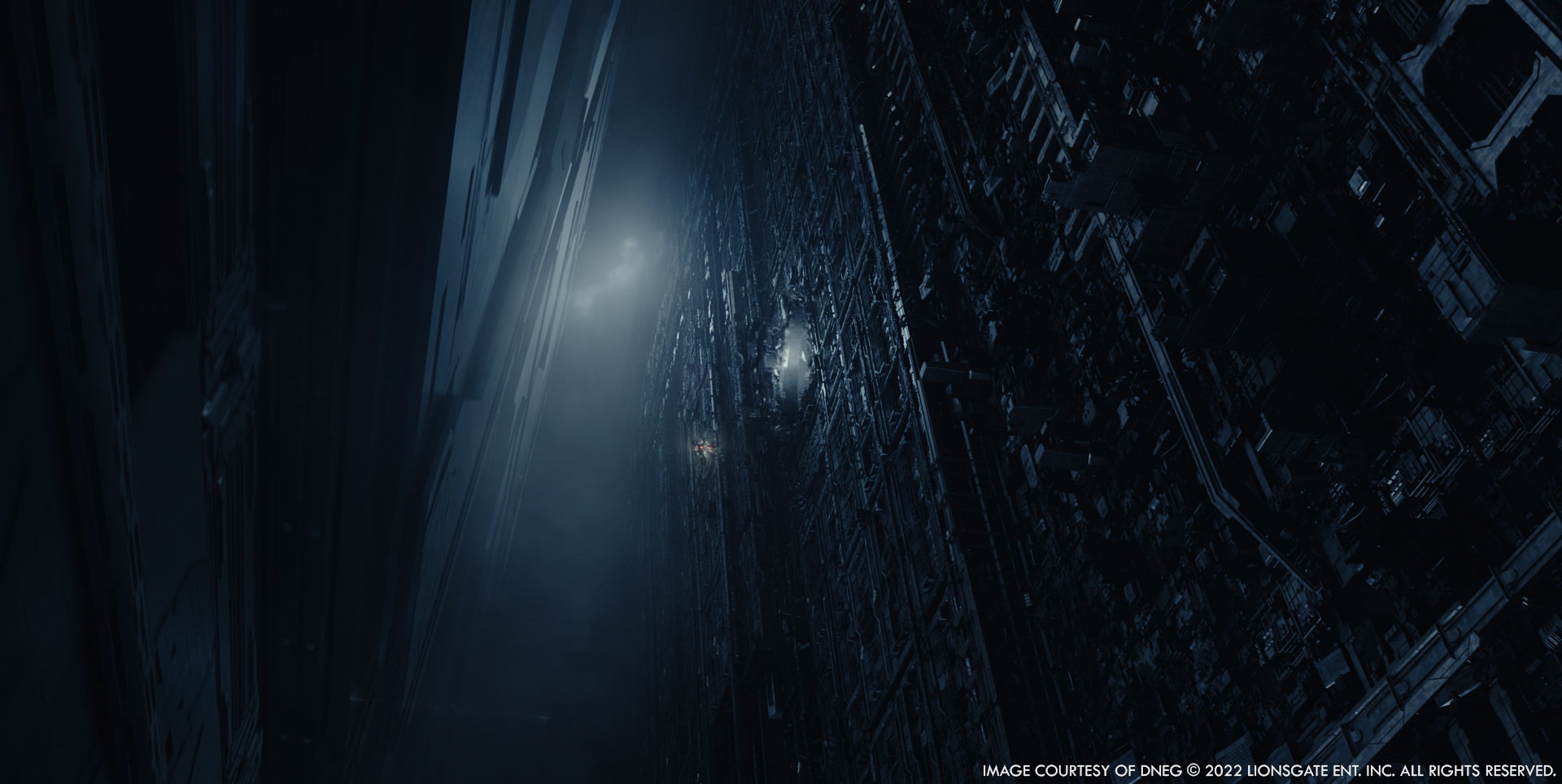
How was the work split between the DNEG offices?
On Moonfall, the work at DNEG was split between the Montreal studio who led the show and a dedicated team in Mumbai.
What are the sequences made by DNEG?
DNEG’s main focus was everything that brings our heroes inside the moon, from when they enter the tunnel until they come out of it later on. We worked, as well, on parts of the Brian dream sequence called ‘The White Room’ when he connects with the moon A.I. All together our work was split into eight different sequences.
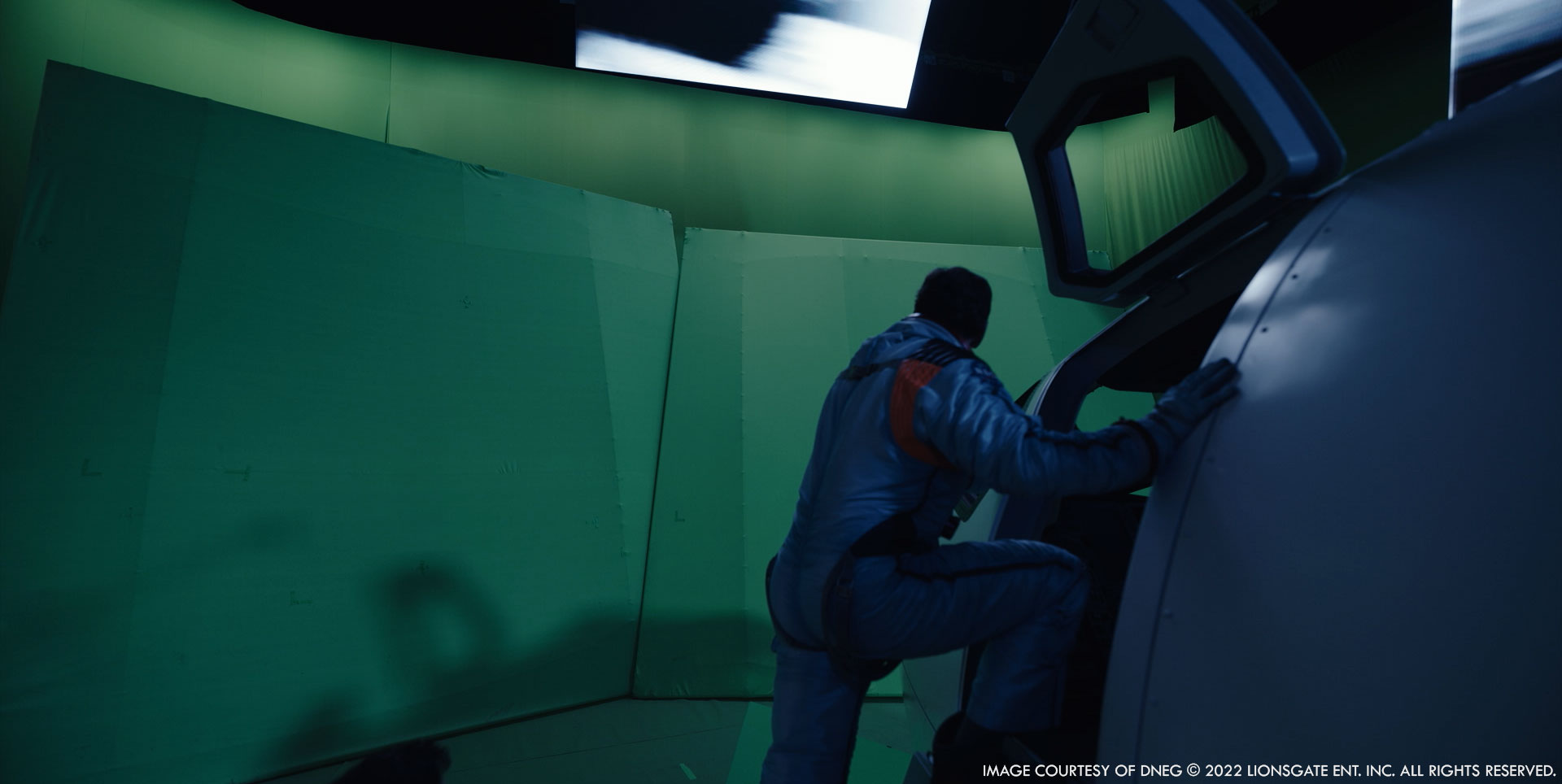
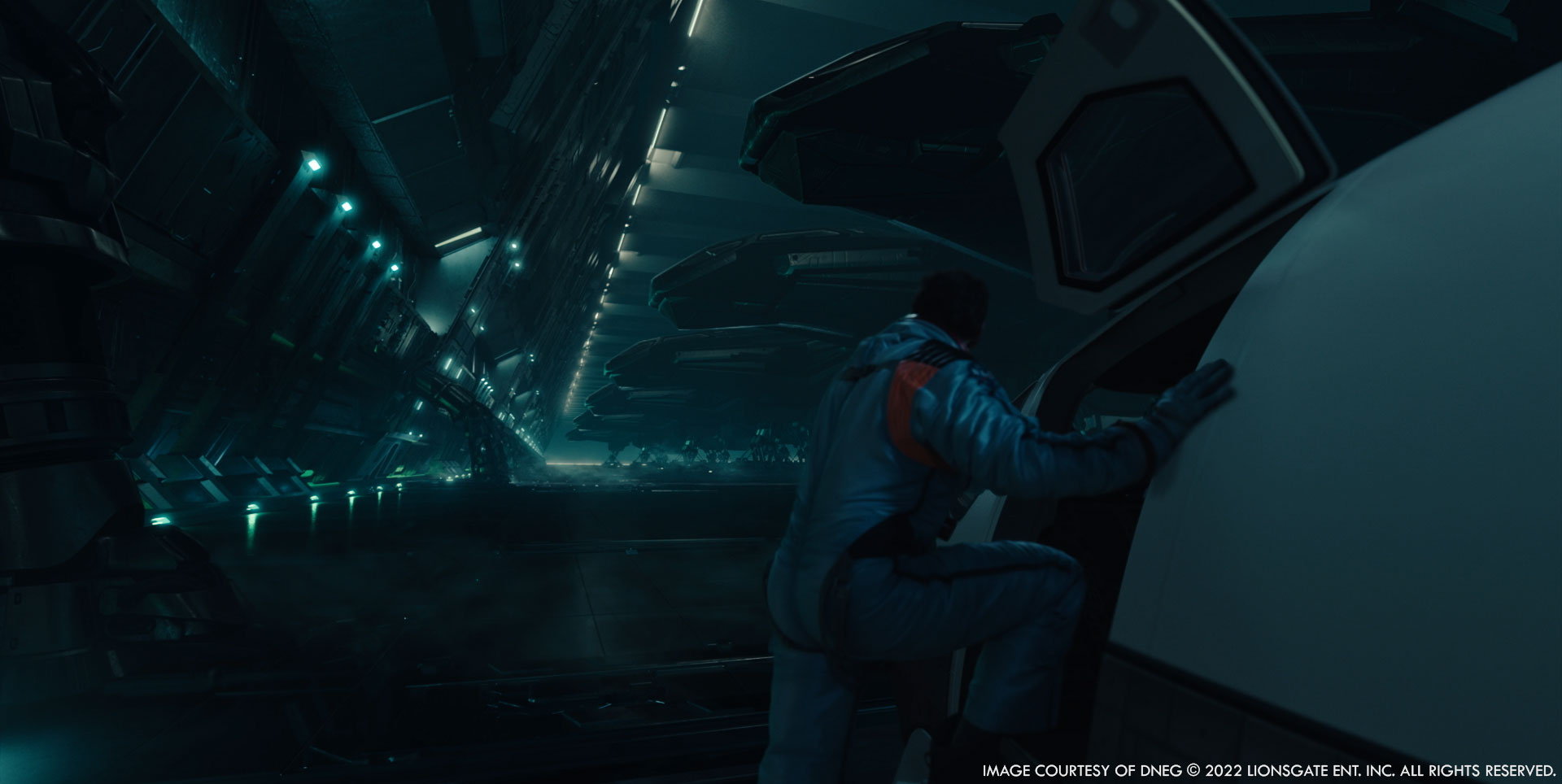
How was your collaboration with the art department to design the interior of the Moon?
We started with a design of the elements constituting the structure of the inside of the moon. We initially explored how to read the scale of such a gigantic environment. We had to fill a 3000km diameter sphere with animated elements and make sure that the audience understood at first glance just how gigantic this world is. DNEG and Aaron Sims Company (ASC) then re-designed every element of this environment with a crazy amount of detail.
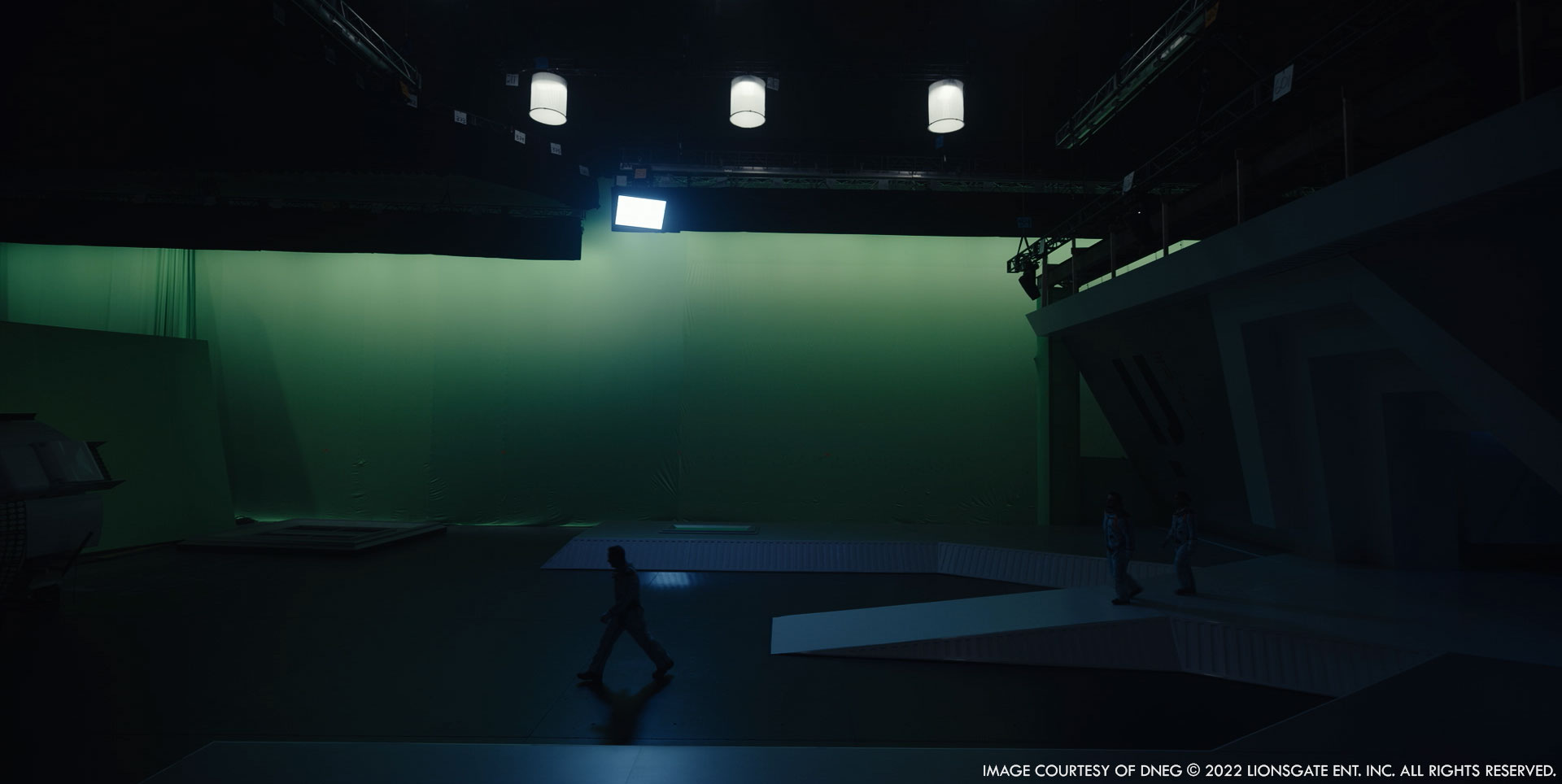
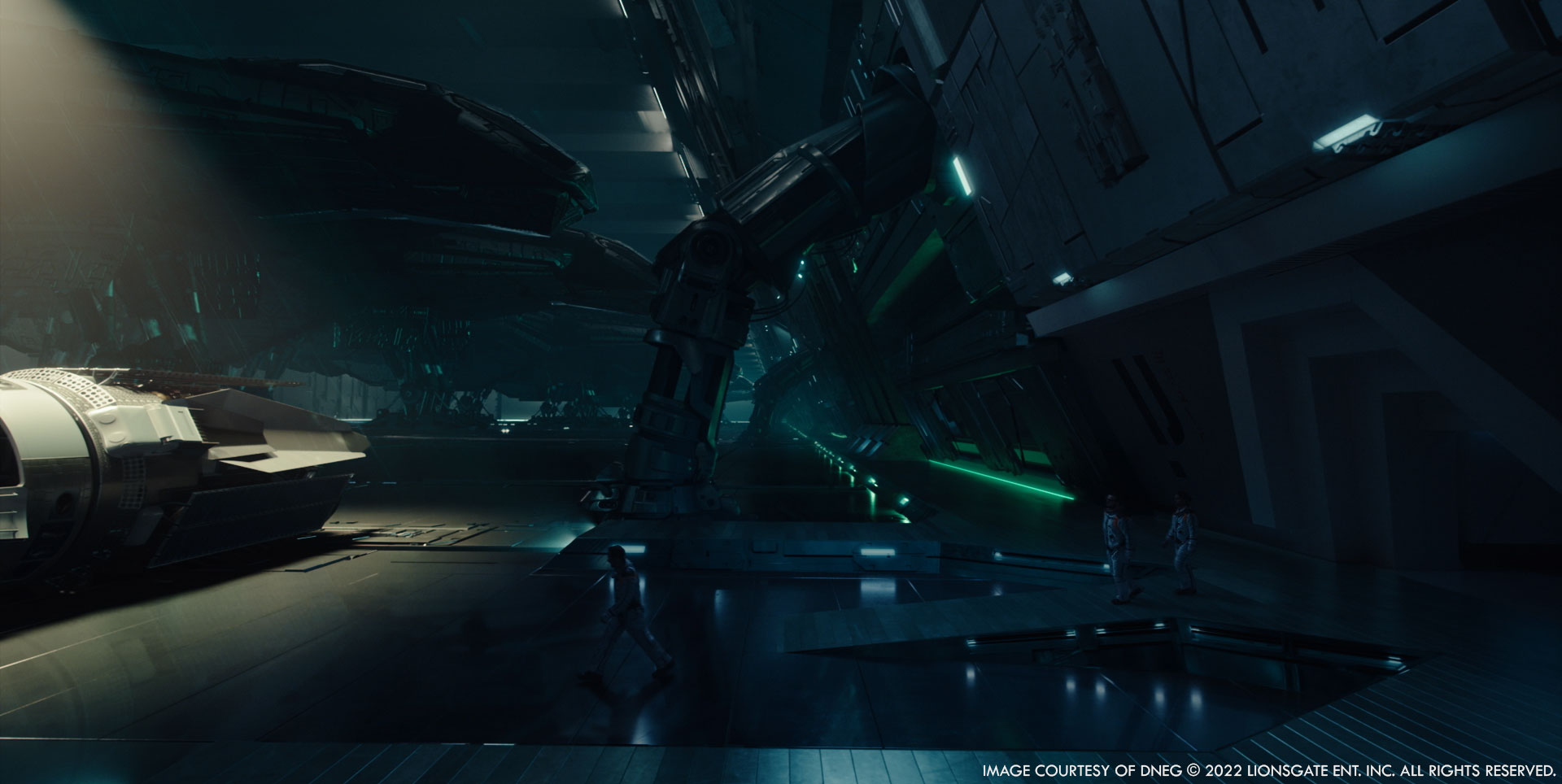
Can you elaborate about the creation of this massive environment?
The inside of the moon environment is what we call a Dyson Sphere. Imagine a 3000km diameter high tech sphere filled with massive mechanical spinning and rotating rings with specific purposes, as well as a White Dwarf at its center like a mini sun and used as a power source to keep the system active. We decided very early to use the instancing as much as possible to optimize our scenes. Each element was analyzed to identify and isolate the sections we needed to focus on that would be repeated around an axis to complete it.
Each section was covered with details that were procedurally placed to create some variation all along. Our asset team had to build a huge library of various details like panels, mechanical structures and towers. Our environment team worked very closely with our asset artists.
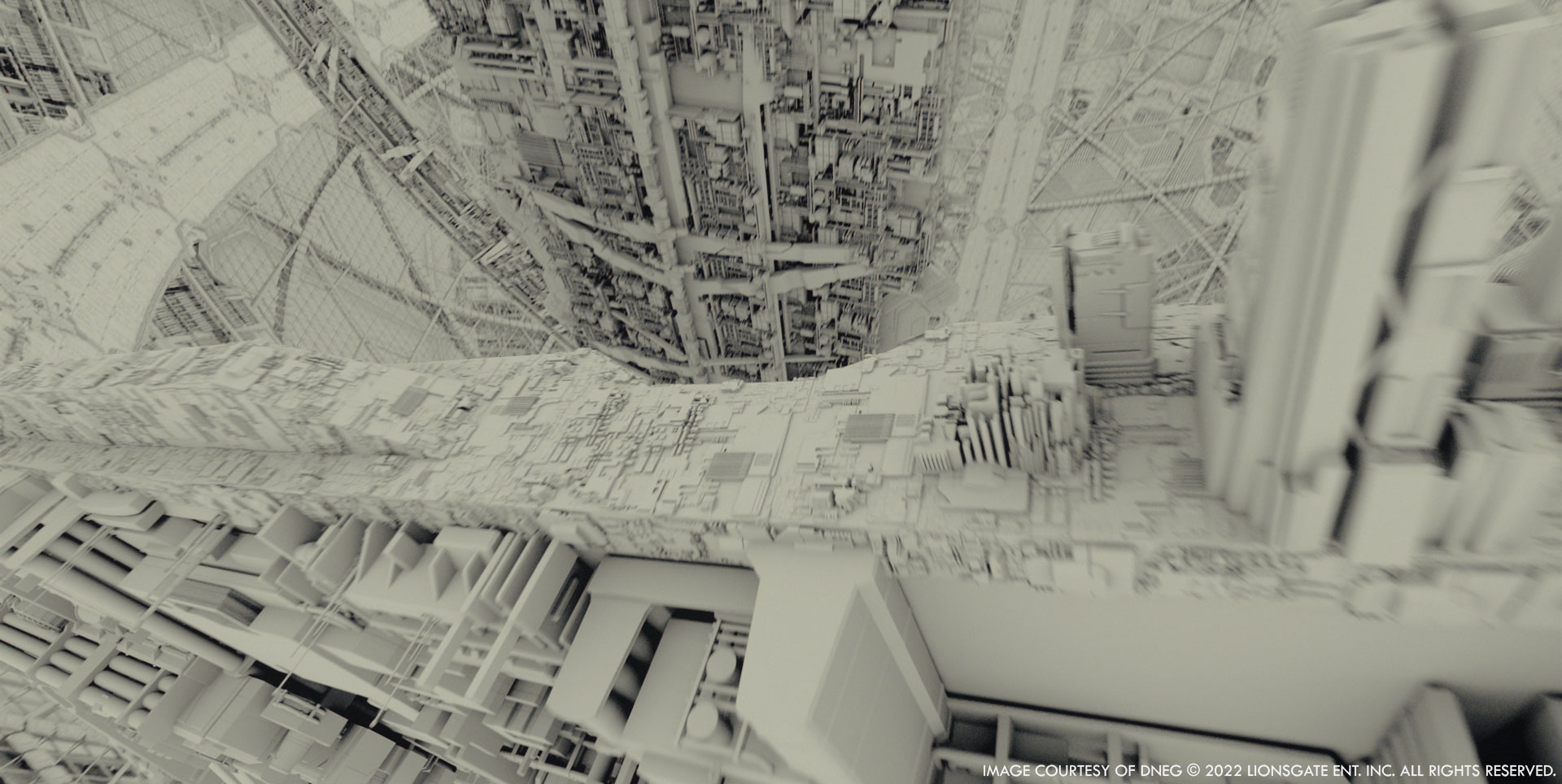
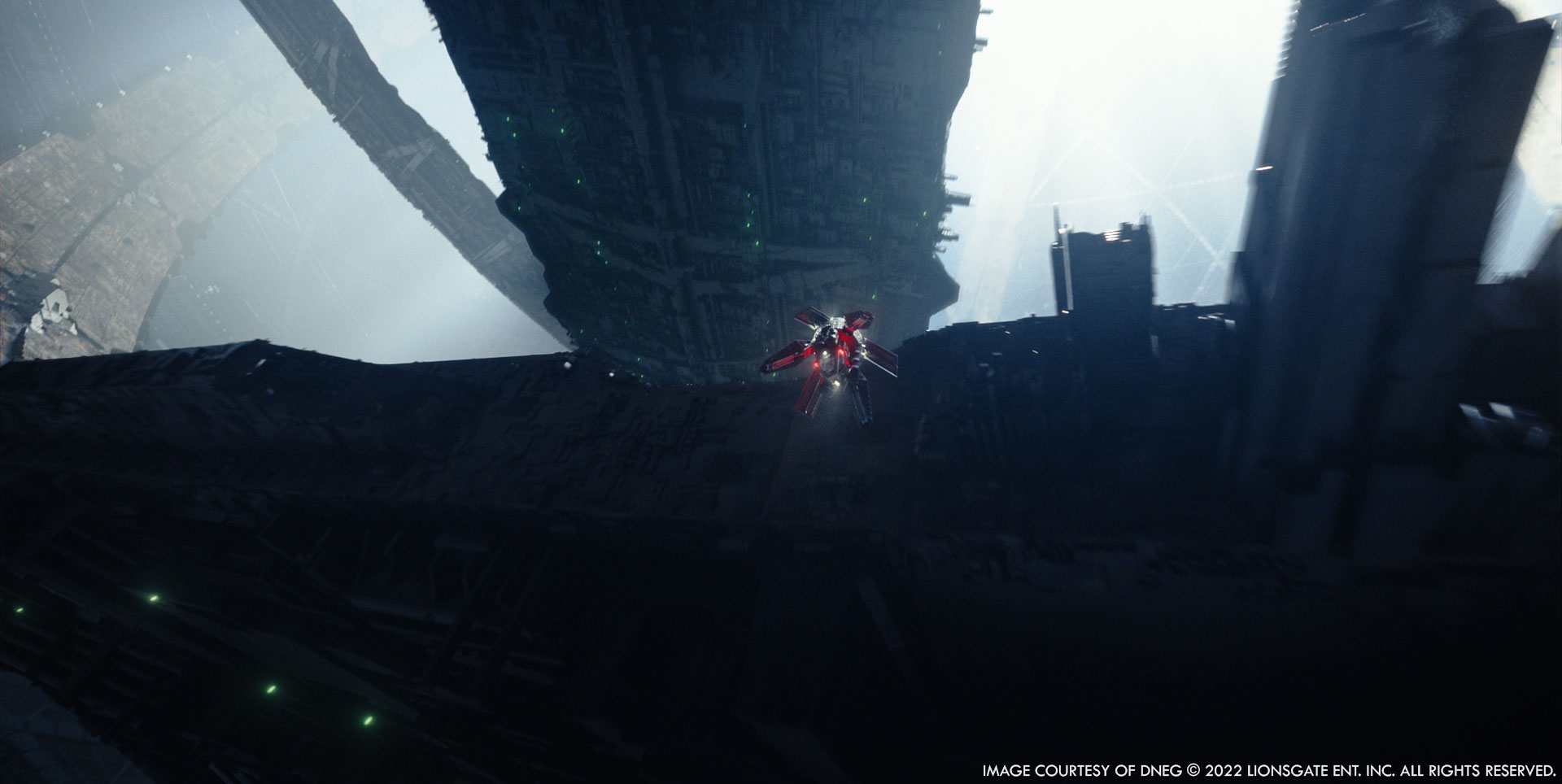
What are the main challenges with an environment of this huge size?
With something that big, the challenge was to make it believable at all times and to have enough detail or references to feel crushed by the size of all elements in every shot. To help visually, we also used an atmosphere with strong god rays and extra small pockets of atmosphere. The speed of each ring and their layout was always tweaked to ensure it looked great in every shot. We also added extra FX storms and lightning as well as static electric arcs on the Faraday Cage that protects the habitation rings.
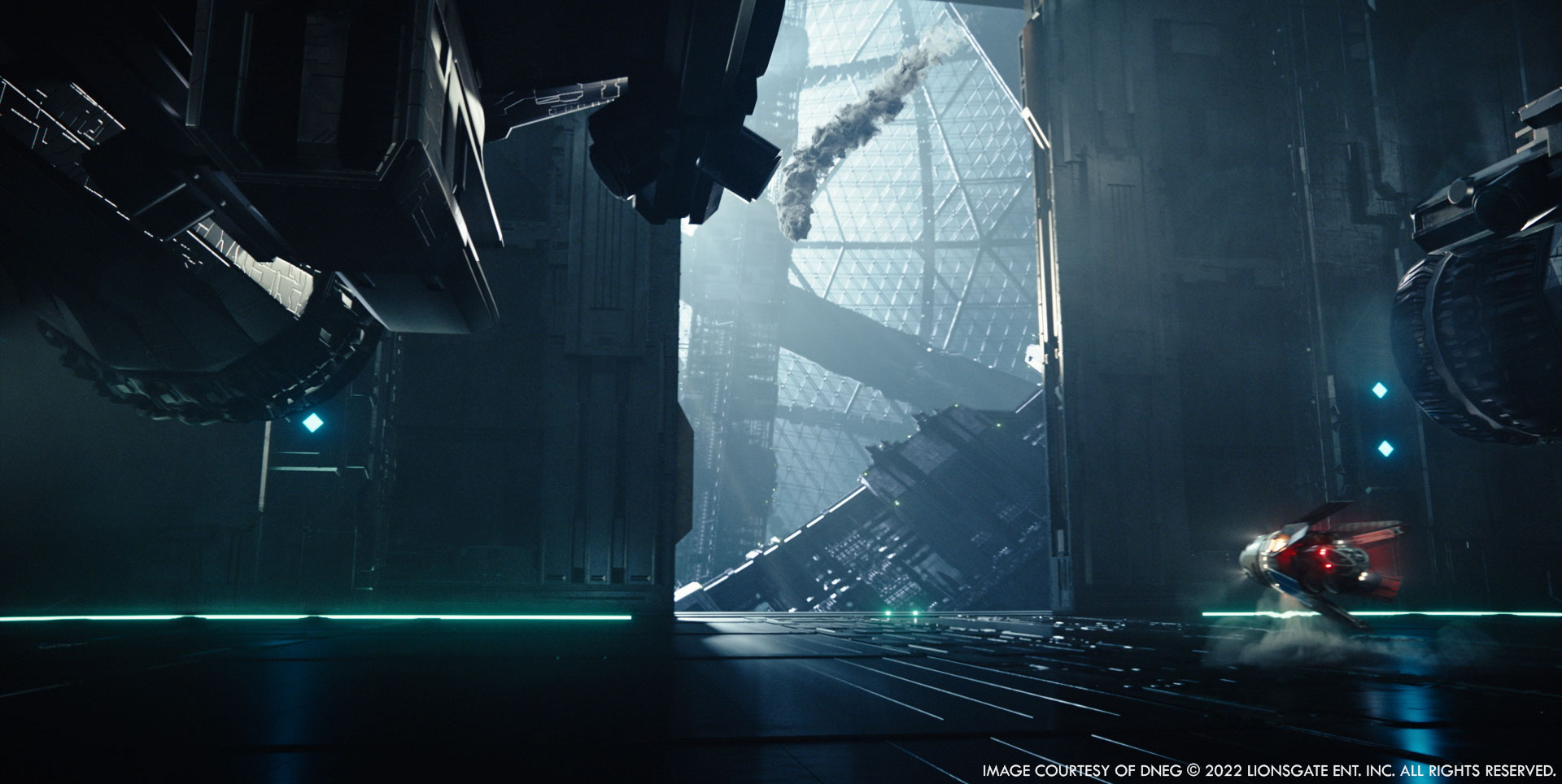
How did you handle the challenge of scale?
As soon as the main shapes were locked for each individual ring or element of this environment, the challenge was to cover them all with a crazy amount of detail and still make sure we could render each shot. We built a big library of elements that were dispatched and applied on the main shapes through Houdini. As I’ve already mentioned, we used the instancing at every level of the build of this environment to allow our renderer Clarisse to render the shot fairly quickly, considering the complexity of each shot.
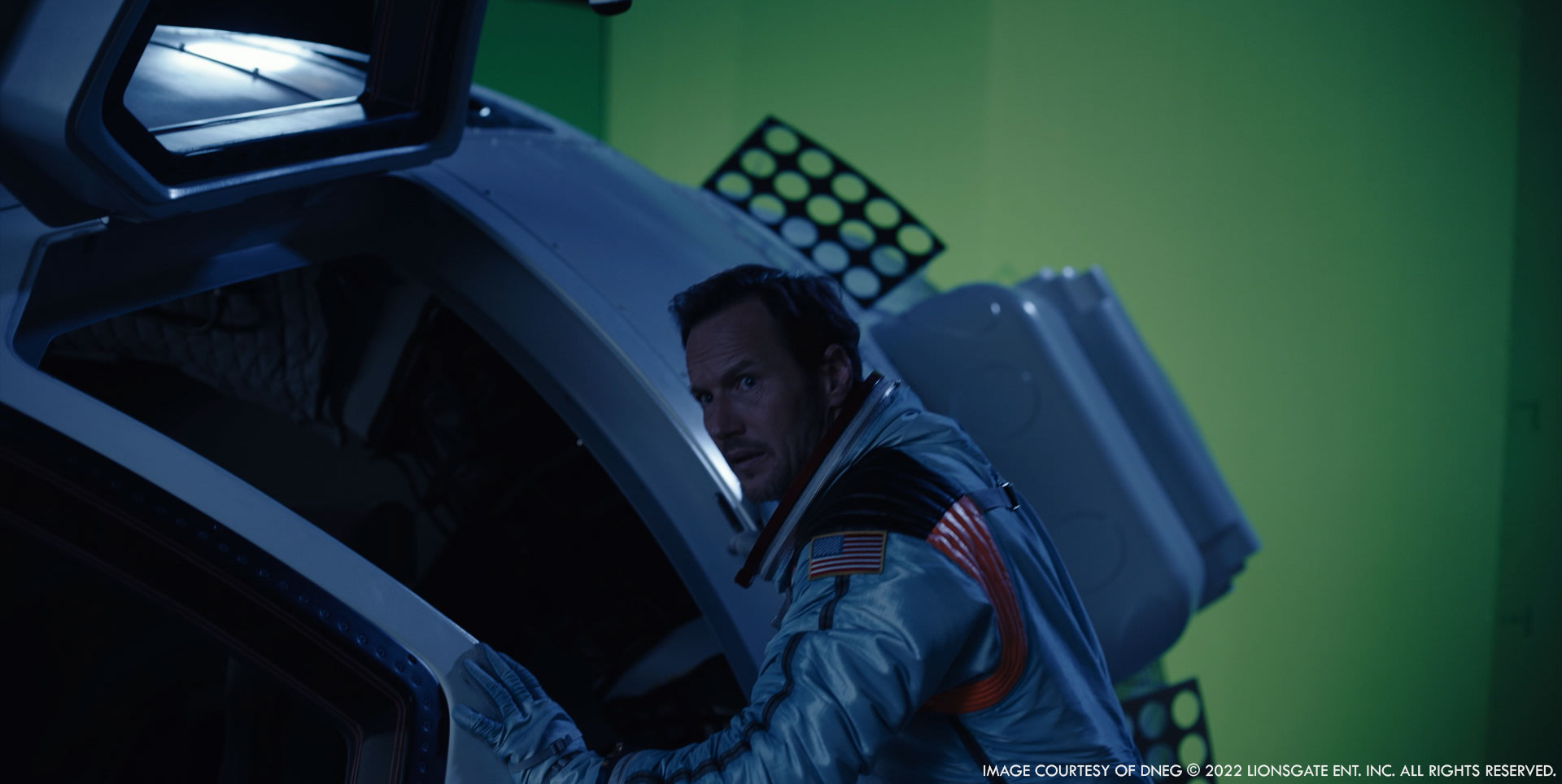
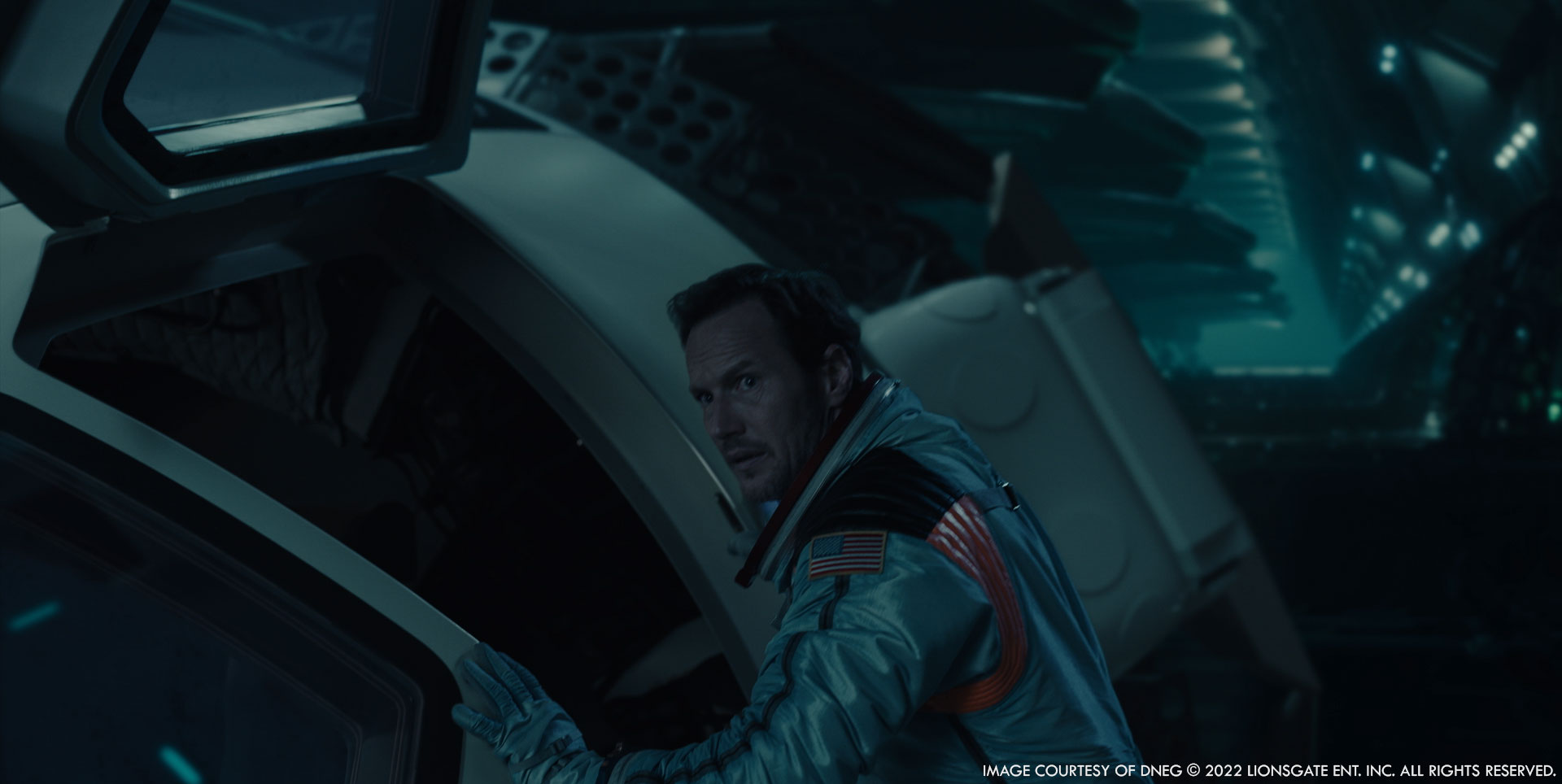
How did you manage the lighting challenges?
The lighting was indeed challenging. If you remember, the structure of the Dyson sphere in our environment is powered by a mini sun in its center. That means that every element is lit with a moon-like sun and therefore, there could be no shadows to shape nicely or dramatically. All of the details you see were put together by our build team. That’s where our incredible lighting team jumped in. We first made sure our White Dwarf main light source creates all of the god rays to seat the logic of one sun-like light source illuminating the general atmosphere. After that, each individual shot was art directed to shape all the elements and details. Our artists had to create different lighting for each ring of the Anomaly to ensure each shot looked wonderful. It was sometimes tricky to keep the look and not break the continuity in an obvious way from one shot to the other.
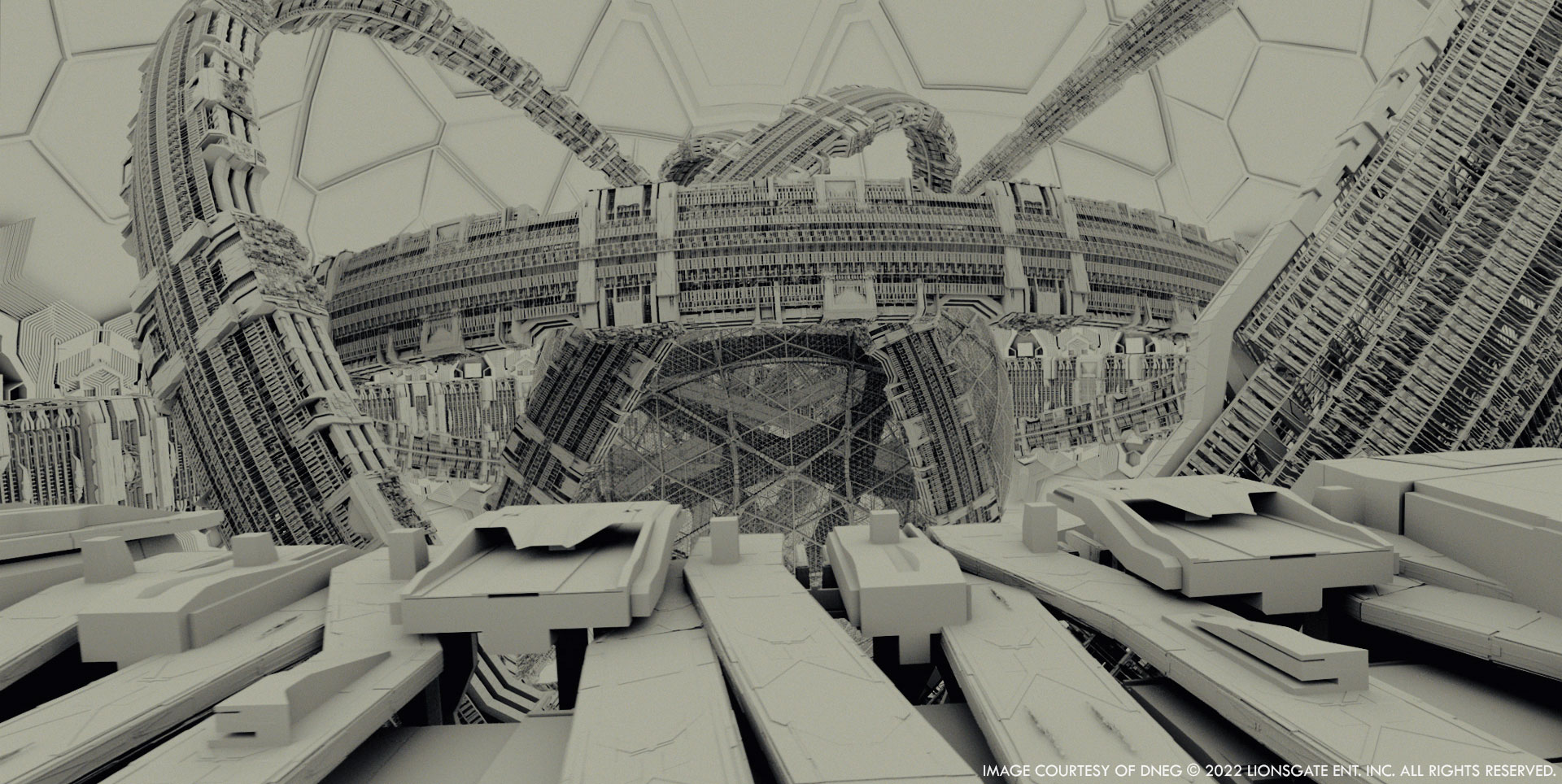
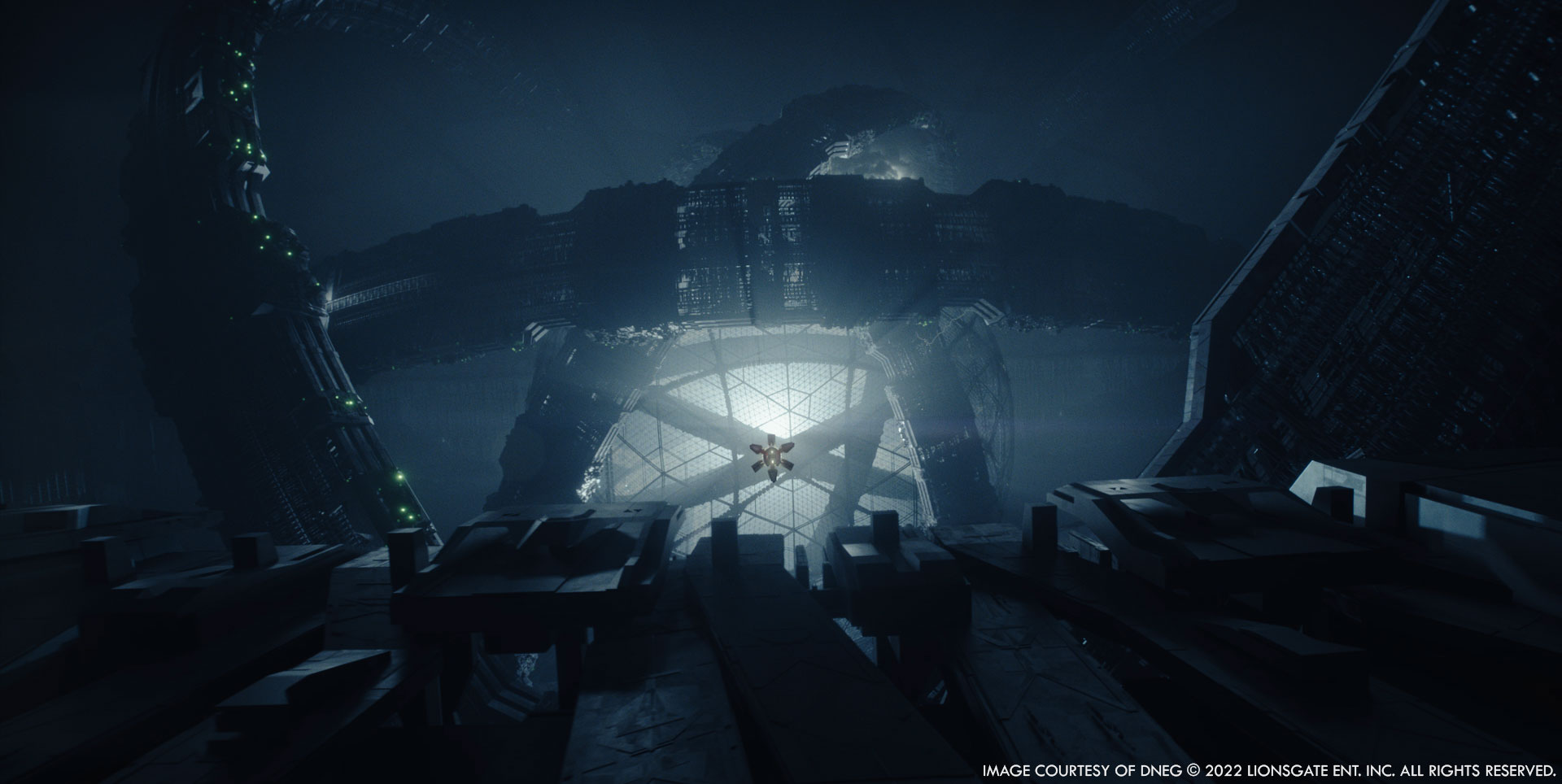
Can you explain in detail about the design and the creation of the Anomaly?
The design of the Anomaly was a journey. Based on the initial meetings with Roland and Pete, we knew that its head would have a running fractal pattern like a mandelbulb but made of changing shapes and objects driven by particles. This animation could run in and out depending on the actions. In the script, the Anomaly had to interact with our heroes’ vehicles and some environment elements. We created some tentacles in our animation rig that would grow whenever a shot required it. They had their own fractal animated patterns. The Anomaly’s head was followed by a residual trail that we wanted to be able to control whatever the shot. The Anomaly also had to go through crazy speed differences to achieve some of the shots. This can be challenging when simulating particles and trying to keep the same look overall. Its shading was mostly onyx black but with control on the spec to make sure it does not go crazy shiny.
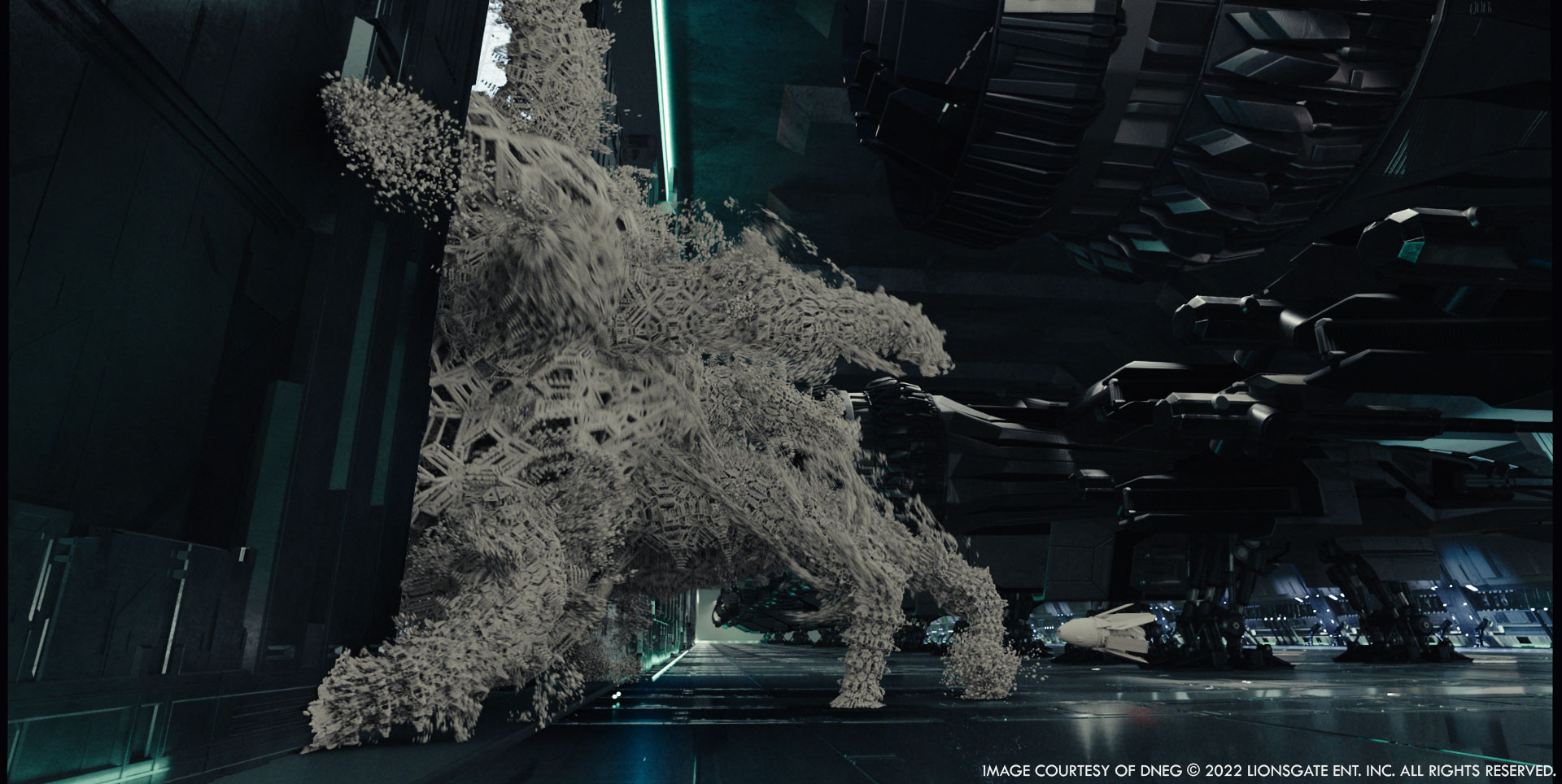
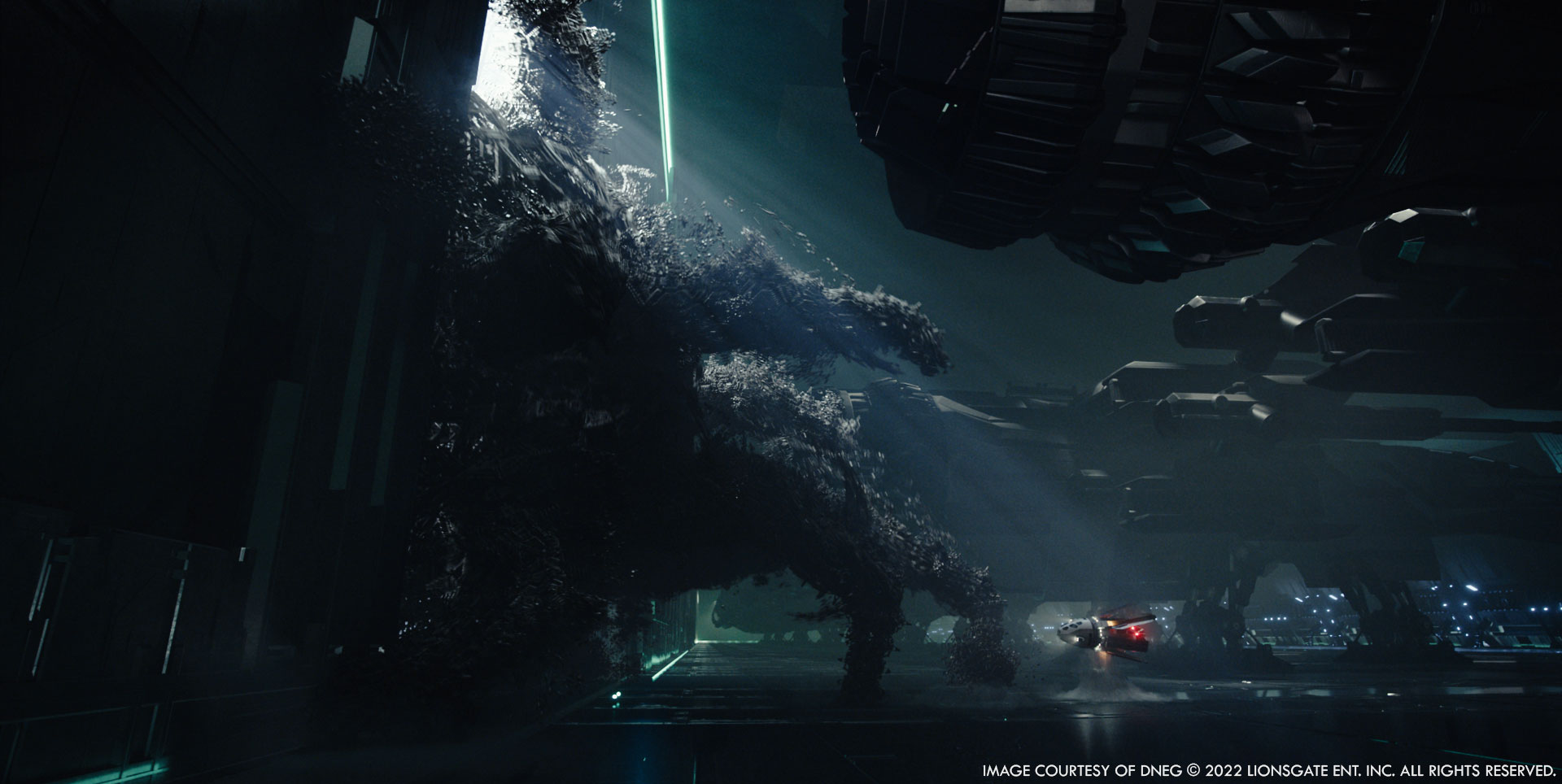
How did you create the various vehicles?
There were two categories of vehicles on Moonfall: the human vehicles and the ancestors. The only terrestrial vehicle we had to create was in two parts, the Lander/Rover. It was based on a concept model that we had to enhance and redesign for some parts. We had to make sure we could connect the outer body with the simpler version that was built on set as the film art department focused mainly on the inside.
The ancestor vehicles are the fighter ships you’ll see in the docking bay surrounding our crashed Lander/Rover and inside the kilometers-long battleship you’ll see in our final chase sequence.
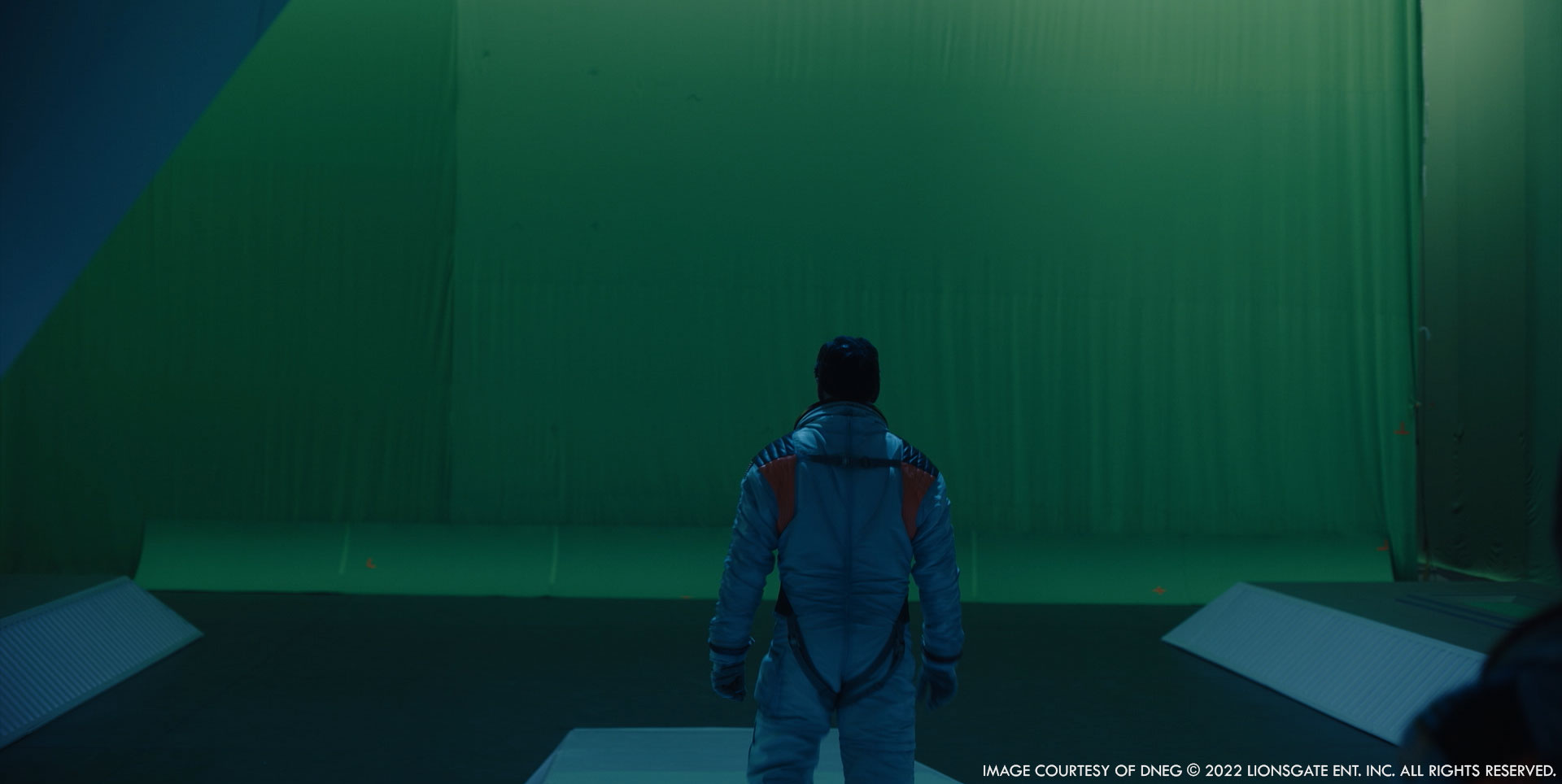
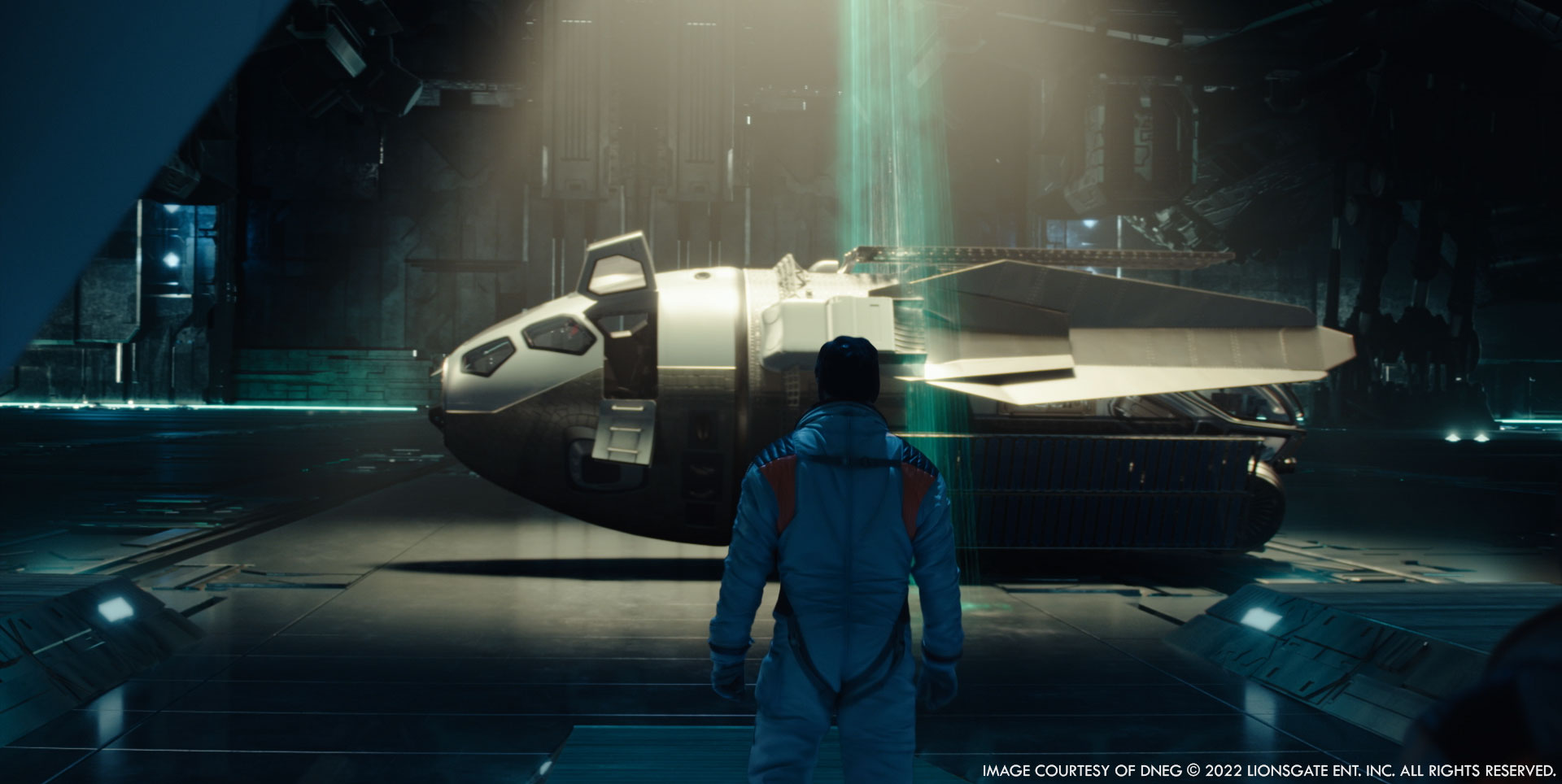
Which shot or sequence was the most challenging?
Surprisingly enough, our most challenging sequence did not involve the moon interior environment. Don’t get me wrong – a lot of work and energy made this part possible. But the more visually challenging environment was the metal tunnel our heroes use to escape from the moon. It’s a giant tube with a spiral structure that needs to let enough light in, even if the main source is very far away and has a metal quality with some scale information. The repetitive spiral pattern was a nightmare from one shot to the other.
We had to adjust the speed of the camera all the time to avoid the chariot wheel effect on each shot and to ensure that the pattern doesn’t look like it’s going backwards. And lighting wise, our team performed some kind of miracle to control the metal zing light effect on the surface of the tunnel and ensure the Anomaly was backlit.
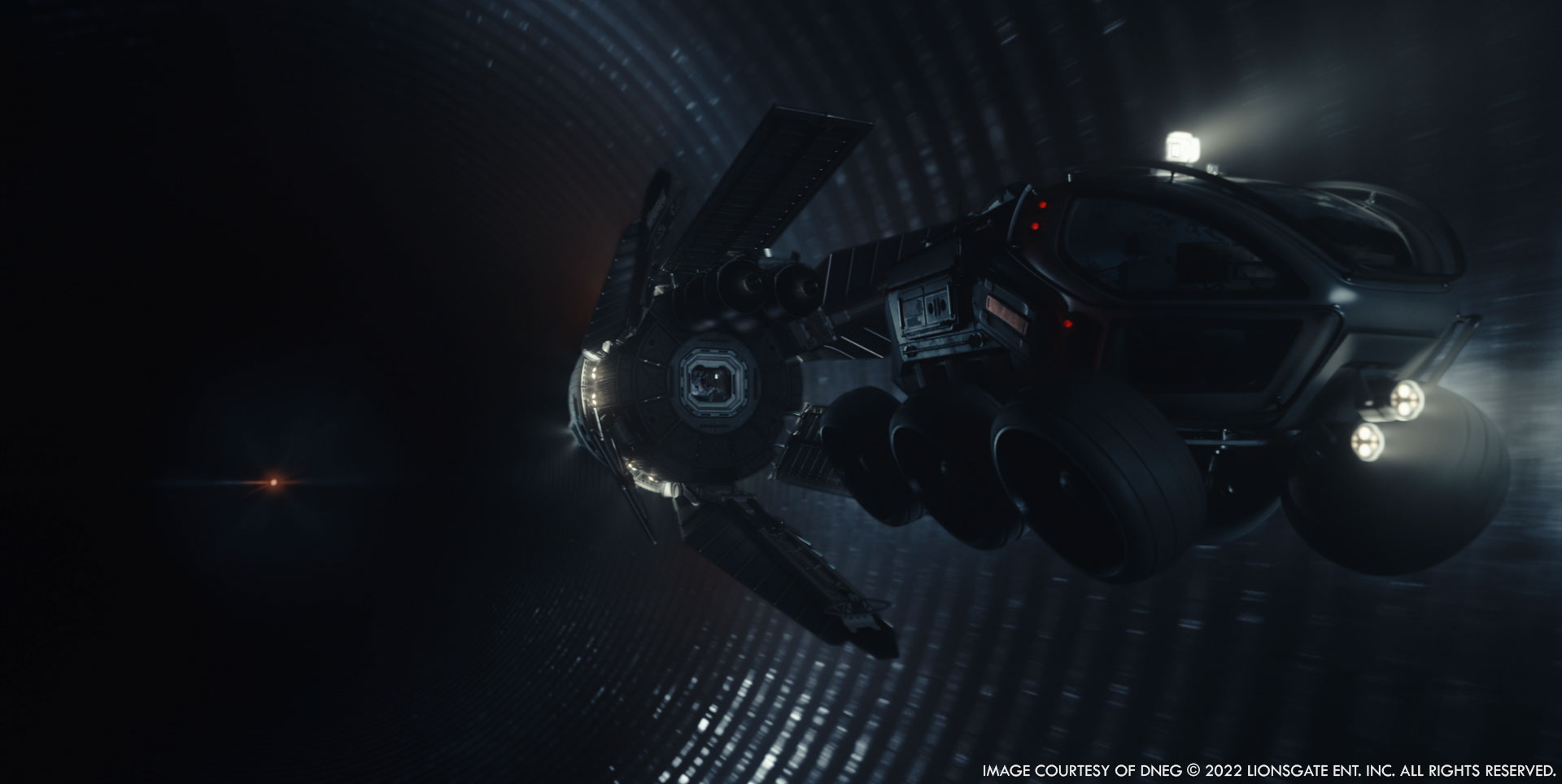
What is your favorite shot or sequence?
I love a lot of shots in our sequences, but my favorite one is still when you see our heroes’ Lander/Rover going toward the center of the moon. You witness all the environment lighting up close and every component becoming activated and alive. It gives me goosebumps every time.
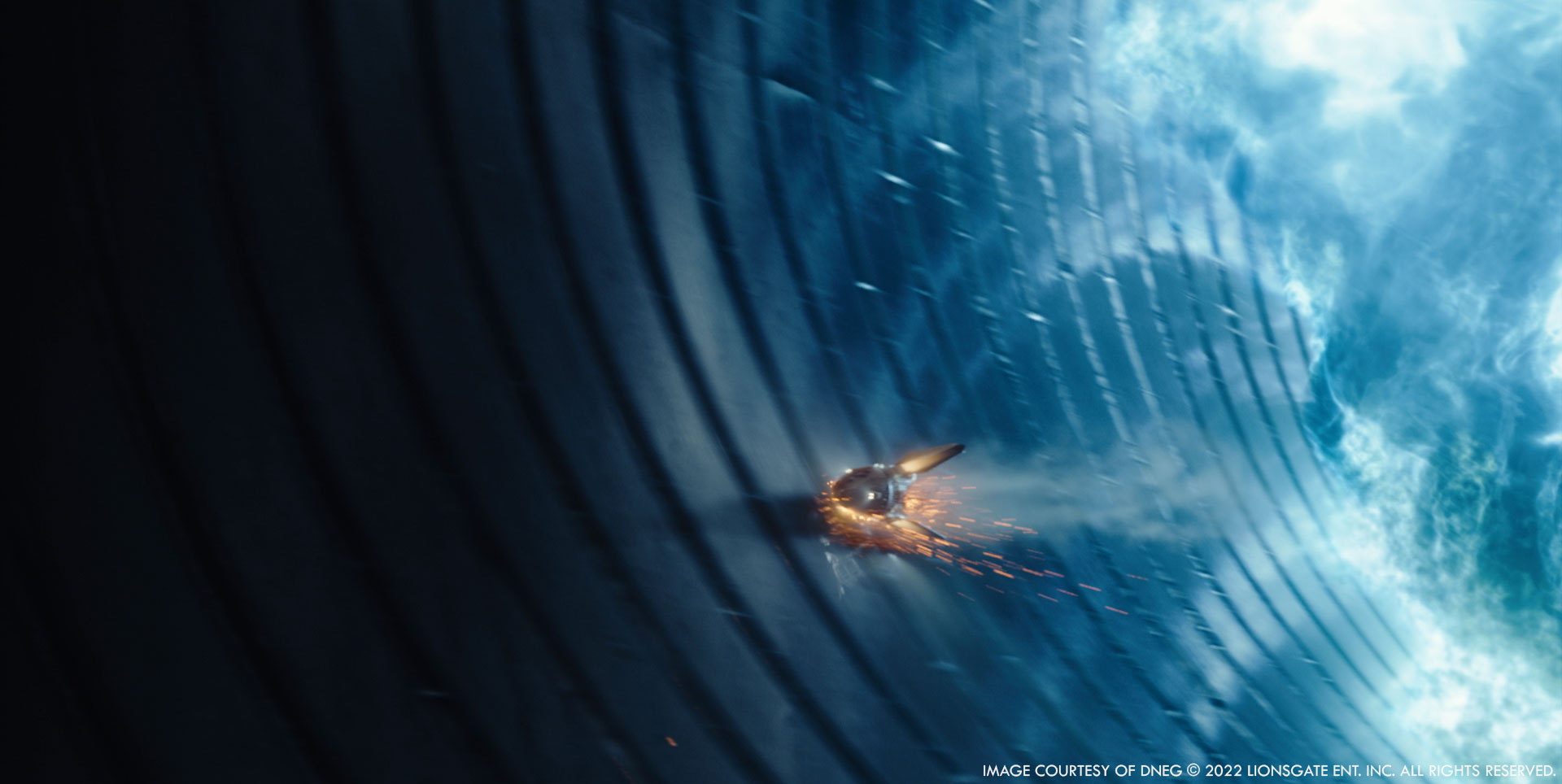
What is your best memory on this show?
I have so many good memories of Moonfall. Our collaboration with Roland and Pete was very rewarding. Our teams in Mumbai and Montreal were also amazing and they pulled off some tricky technical and artistic challenges.
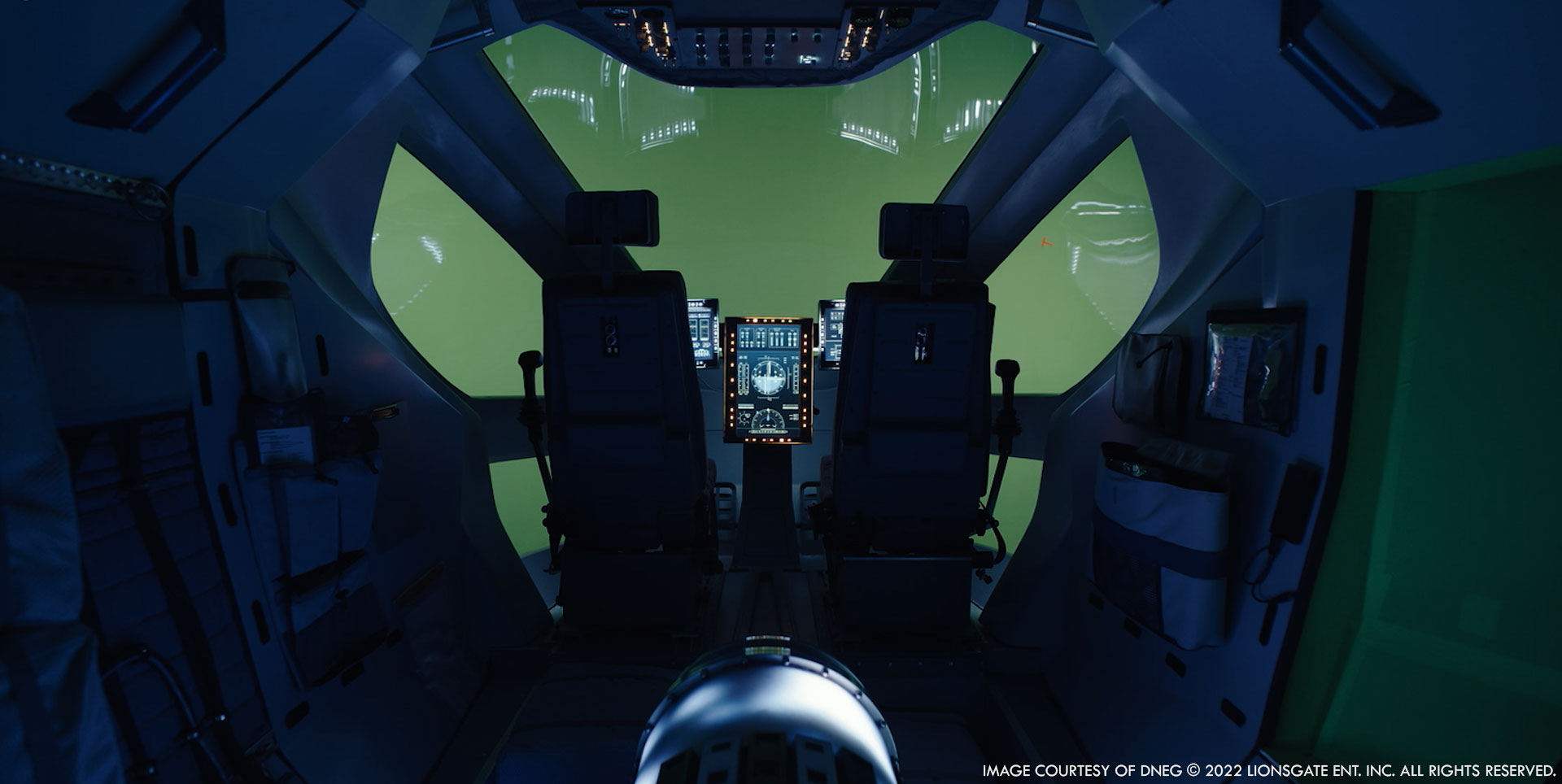
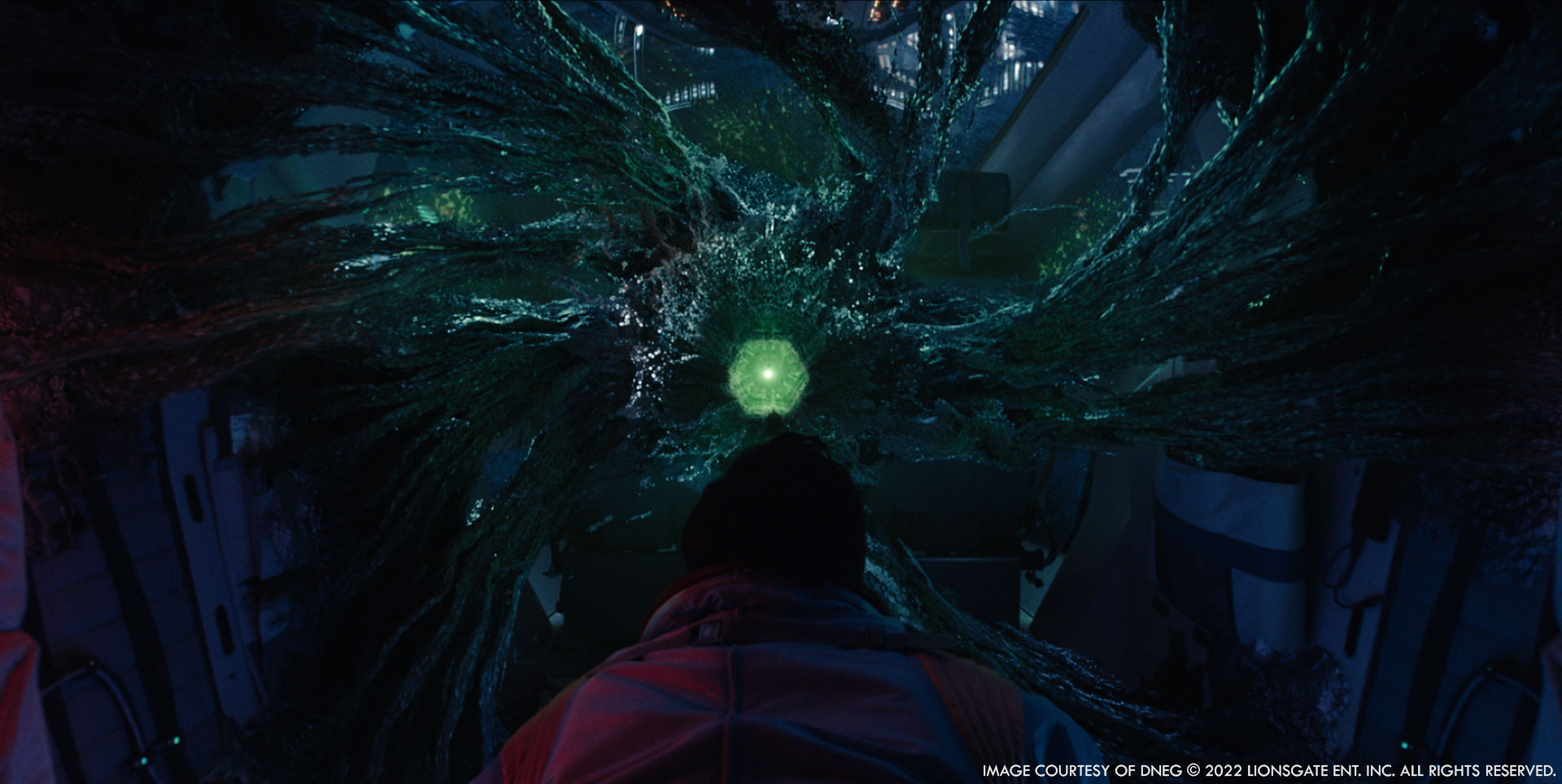
How long have you worked on this show?
We first started in March 2020 with our previs team. Because of the COVID-19 crisis, the main production had to be delayed by a few months. We used that time to refine our previs and update it with the new ideas Roland Emmerich was creating to refine the story. We were able to re-start the main production in October 2020, and finalized the last shots in December 2021.
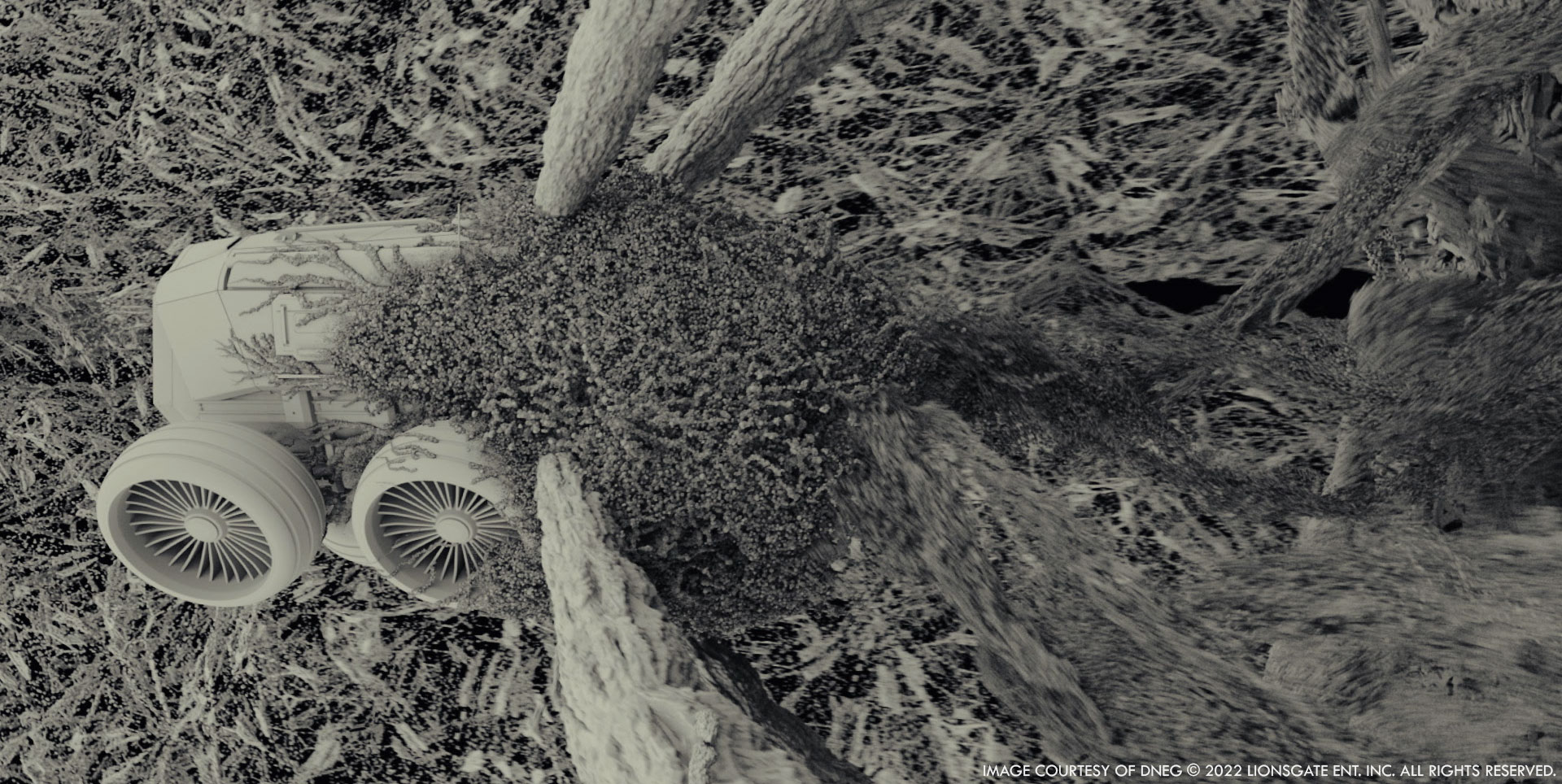
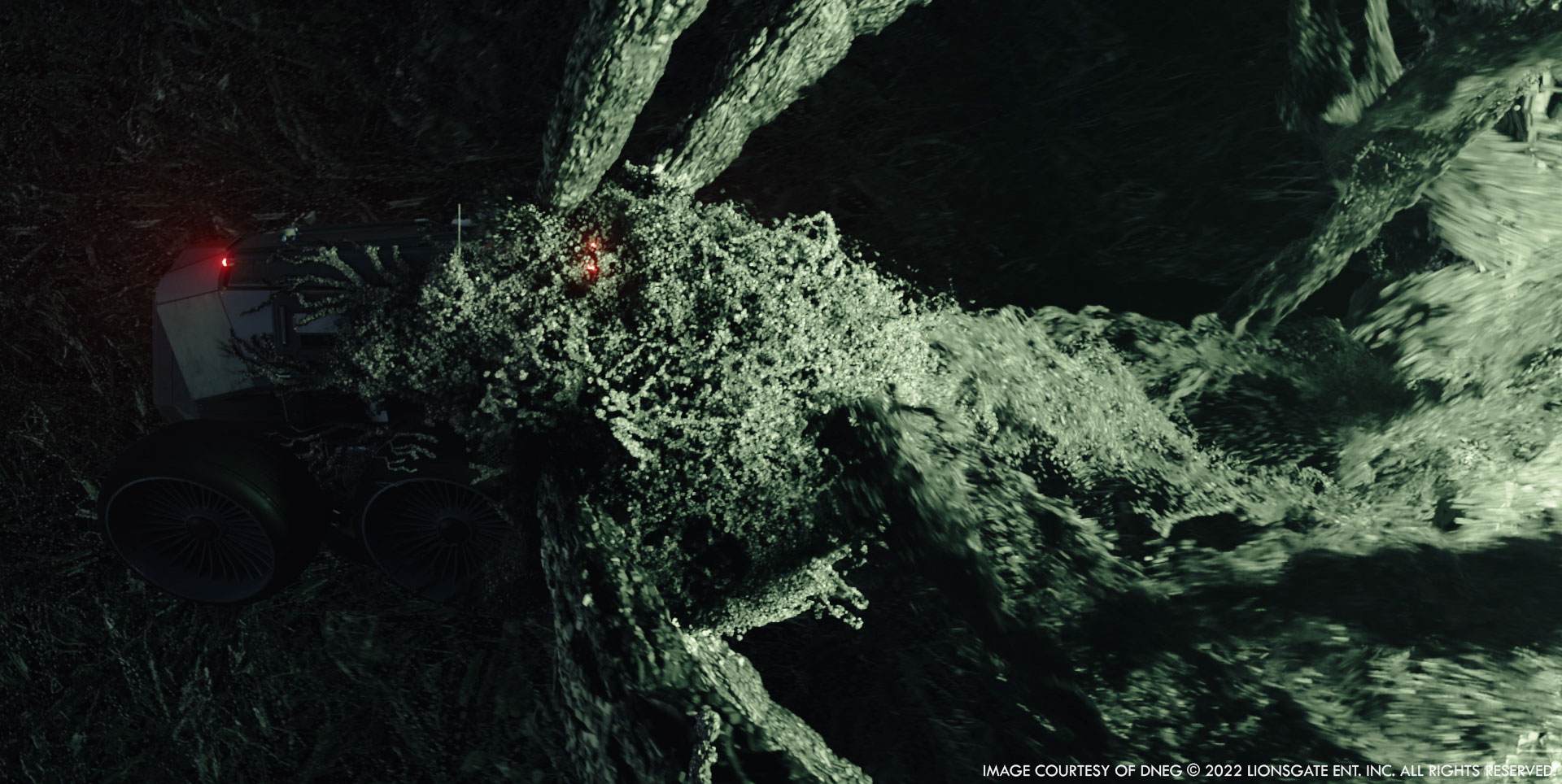
What was the size of your team?
All together, between Montreal and Mumbai, 220 artists worked on Moonfall.
What is your next project?
I’m not allowed to share too many details yet but I can say that I’m excited by it as it’s a mix of everything I like.
A big thanks for your time.
// Moonfall – VFX Breakdown – DNEG
WANT TO KNOW MORE?
DNEG: Dedicated page about Moonfall on DNEG website.
© Vincent Frei – The Art of VFX – 2022






